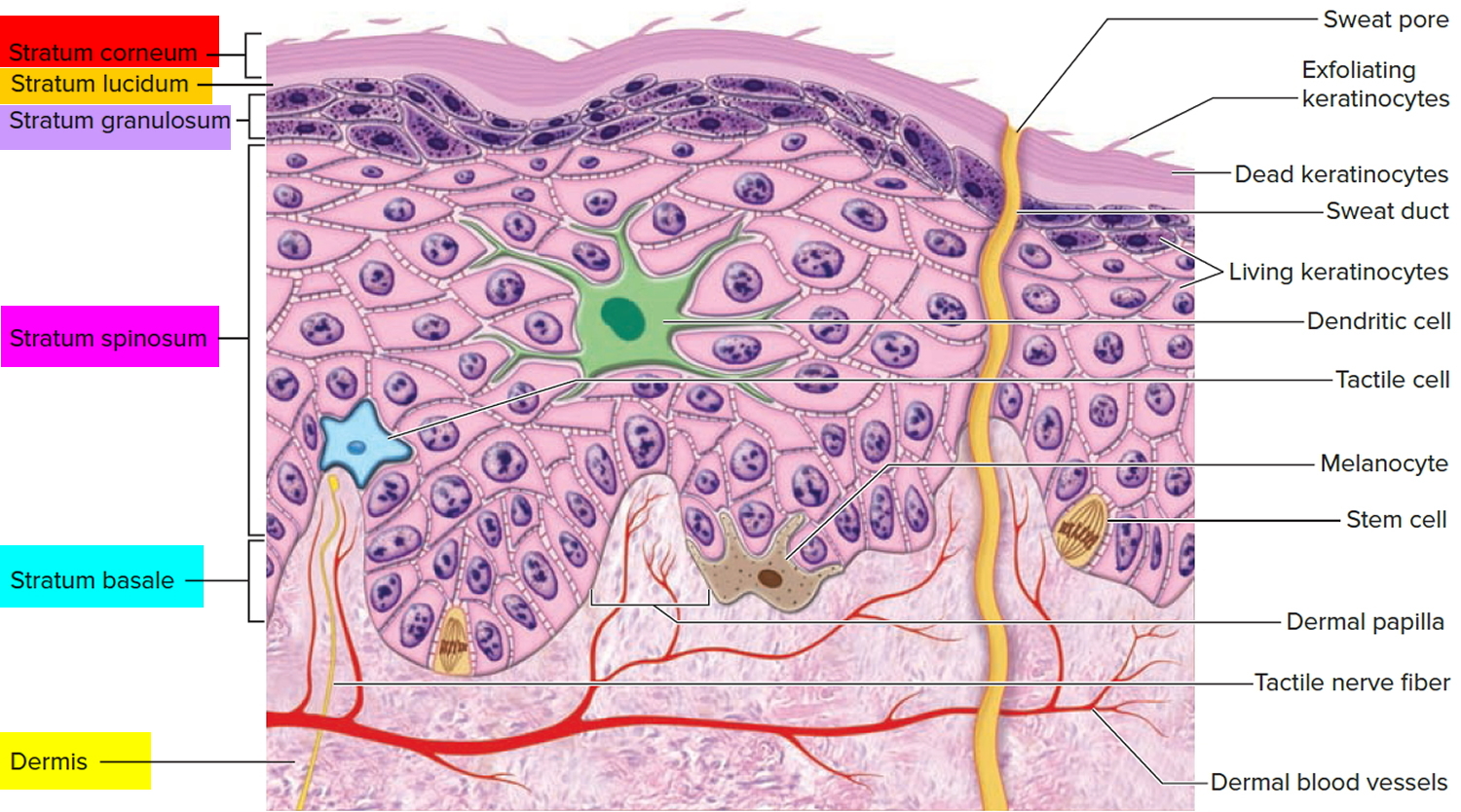The epidermis outermost layer of human skin has four layers within itself the stratum corneum the granular layer the squamous cell layer and the basal cell layer

The Epidermis: Unveiling the Layers of Human Skin

The epidermis, the outermost layer of human skin, is a fascinating structure composed of four distinct layers. Each layer has its unique characteristics and contributes to the skin’s overall function and protection. In this article, we will delve into the intricacies of the epidermis and explore the importance of its four individual layers: the stratum corneum, the granular layer, the squamous cell layer, and the basal cell layer.
The Stratum Corneum: The Protective Shield
The stratum corneum, also known as the horn-like layer, forms the outermost layer of the epidermis. It is primarily responsible for protecting the underlying skin layers from external factors such as water loss, microorganisms, and harmful substances. Composed of dead skin cells, the stratum corneum acts as a barrier, preventing the entry of pathogens and maintaining the skin’s hydration levels.
The Granular Layer: The Barrier Reinforcement
Beneath the stratum corneum lies the granular layer, named for the presence of keratohyalin granules within its cells. This layer plays a crucial role in strengthening the epidermal barrier and regulating water loss. The granular layer also participates in the production and secretion of lipids, which further contribute to the skin’s moisture retention and integrity.
The Squamous Cell Layer: The Cellular Transition
Situated beneath the granular layer, the squamous cell layer, also known as the stratum spinosum, consists of several layers of actively dividing cells. The cells within this layer undergo continuous renewal and gradually transition into the outermost layer, the stratum corneum. These cells are rich in keratin, a protein that provides structural strength and resilience to the skin.
The Basal Cell Layer: The Source of Renewal
At the base of the epidermis resides the basal cell layer, which serves as the primary source of new skin cells. The cells of this layer actively divide and produce keratinocytes, which eventually migrate upwards, replacing the cells that transition into the upper layers of the epidermis. This constant cellular renewal ensures the maintenance and regeneration of the epidermal structure.
The Significance of Understanding Epidermal Layers
Understanding the intricate layers of the epidermis is crucial for comprehending the skin’s function and its remarkable ability to protect us. By learning about the stratum corneum, granular layer, squamous cell layer, and basal cell layer, we gain insight into the mechanisms behind skin’s water retention, barrier defense, and cellular rejuvenation.
Moreover, this knowledge can help us appreciate the complexity and beauty of our skin and highlight the importance of proper skincare routines. By nurturing and protecting the epidermal layers, we can enhance our skin’s health, appearance, and overall well-being.
Source: The Library of Congress
Tags
Share
Related Posts
Quick Links
Legal Stuff

